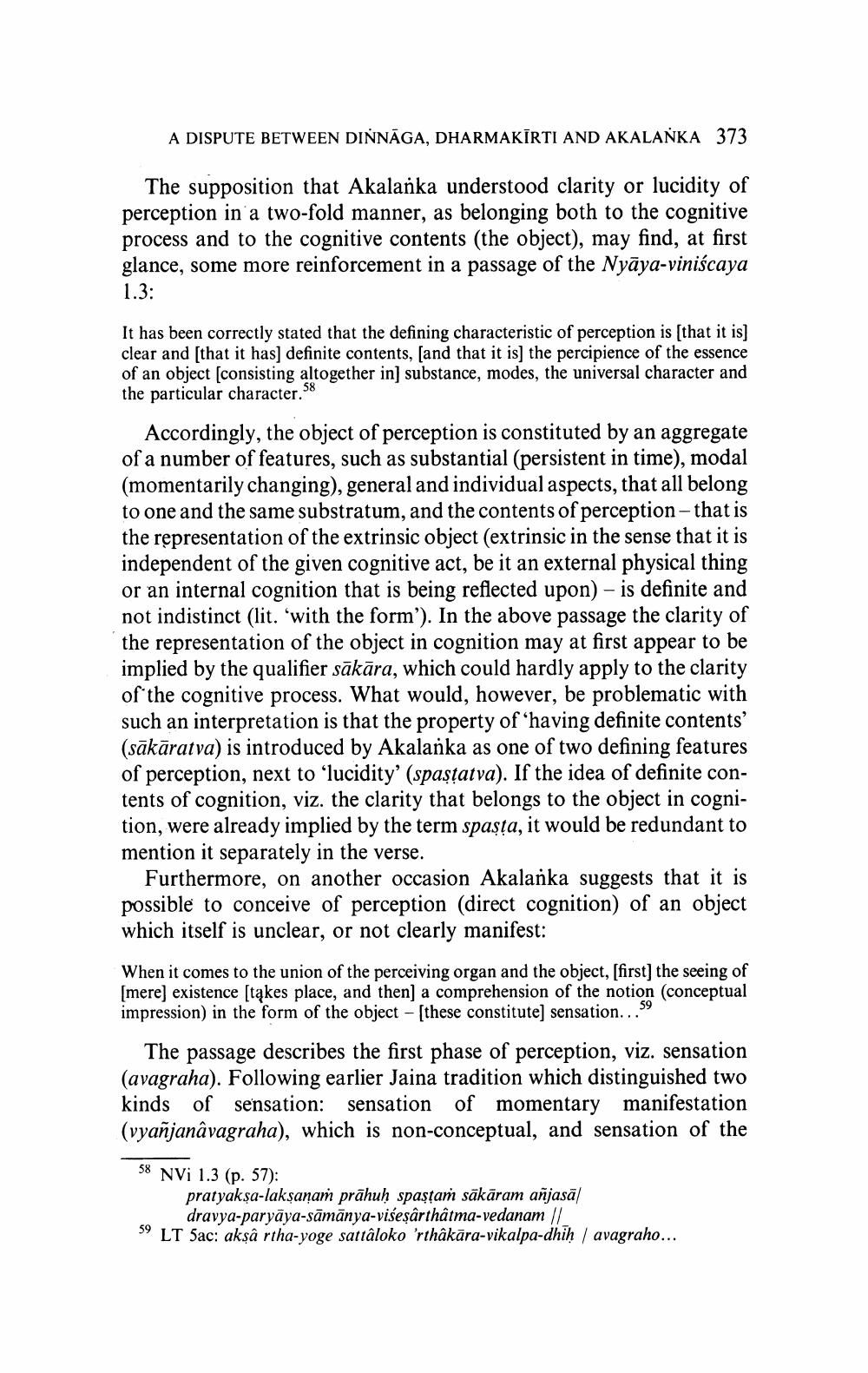________________
A DISPUTE BETWEEN DINNAGA, DHARMAKĪRTI AND AKALANKA 373
The supposition that Akalanka understood clarity or lucidity of perception in a two-fold manner, as belonging both to the cognitive process and to the cognitive contents (the object), may find, at first glance, some more reinforcement in a passage of the Nyaya-viniscaya 1.3:
It has been correctly stated that the defining characteristic of perception is [that it is] clear and [that it has] definite contents, [and that it is] the percipience of the essence of an object [consisting altogether in] substance, modes, the universal character and the particular character. 58
Accordingly, the object of perception is constituted by an aggregate of a number of features, such as substantial (persistent in time), modal (momentarily changing), general and individual aspects, that all belong to one and the same substratum, and the contents of perception - that is the representation of the extrinsic object (extrinsic in the sense that it is independent of the given cognitive act, be it an external physical thing or an internal cognition that is being reflected upon) - is definite and not indistinct (lit. 'with the form'). In the above passage the clarity of the representation of the object in cognition may at first appear to be implied by the qualifier sākāra, which could hardly apply to the clarity of the cognitive process. What would, however, be problematic with such an interpretation is that the property of 'having definite contents' (sākāratva) is introduced by Akalanka as one of two defining features of perception, next to 'lucidity' (spaṣṭatva). If the idea of definite contents of cognition, viz. the clarity that belongs to the object in cognition, were already implied by the term spasta, it would be redundant to mention it separately in the verse.
Furthermore, on another occasion Akalanka suggests that it is possible to conceive of perception (direct cognition) of an object which itself is unclear, or not clearly manifest:
When it comes to the union of the perceiving organ and the object, [first] the seeing of [mere] existence [takes place, and then] a comprehension of the notion (conceptual impression) in the form of the object - [these constitute] sensation..."
59
The passage describes the first phase of perception, viz. sensation (avagraha). Following earlier Jaina tradition which distinguished two kinds of sensation: sensation of momentary manifestation (vyañjanâvagraha), which is non-conceptual, and sensation of the
58 NVi 1.3 (p. 57):
pratyakṣa-lakṣaṇam prahuḥ spaṣṭaṁ sākāram añjasā dravya-paryaya-samanya-viseşârthâtma-vedanam ||
59 LT 5ac: akşâ rtha-yoge sattâloko 'rthâkāra-vikalpa-dhiḥ | avagraho...




